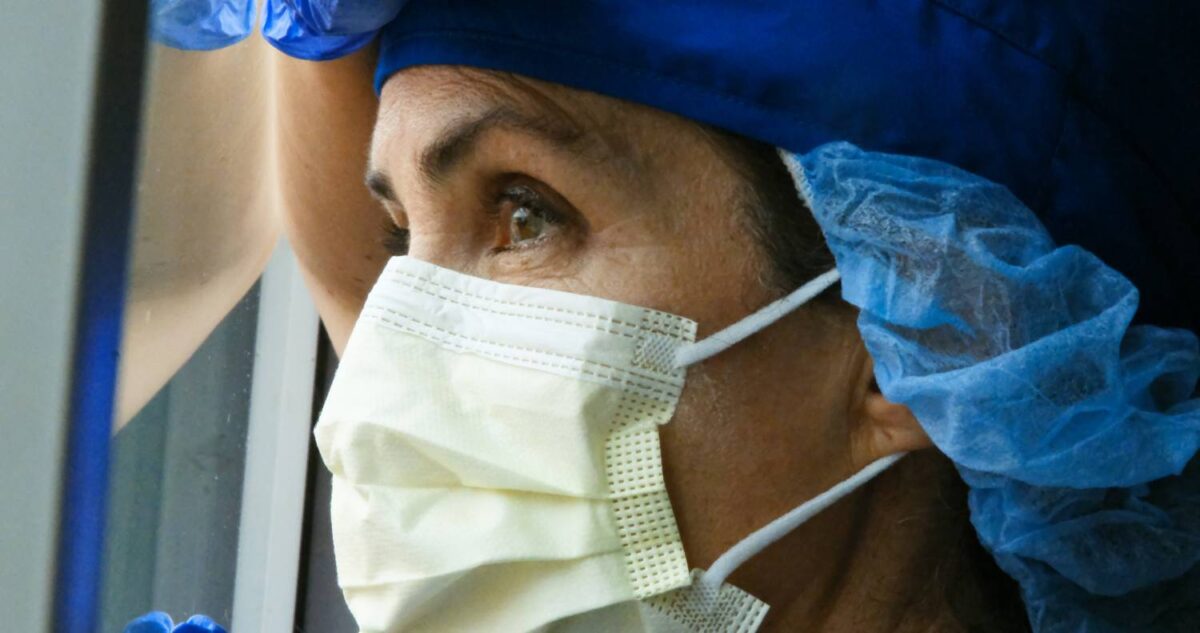Potential Long-Term Effects of the COVID-19 Pandemic on Healthcare Systems

The COVID-19 pandemic, caused by the novel coronavirus SARS-CoV-2, emerged in late 2019 in Wuhan, China and spread worldwide.1 The virus, commonly presenting as a severe acute respiratory disease, has now infected over 18.5 million people and caused over 701,000 deaths.2 To prevent the spread of the virus, national governments have heightened their infection control strategies.1 New “social distancing” and “self-isolation” guidelines, which severely restrict the movement of people, have caused significant economic and health consequences across the globe.1 The rapid spread of the novel coronavirus has created challenges for healthcare systems, resulting in several changes that may have lasting effects long after the COVID-19 pandemic has ended.
As the number of new cases increased, medical departments had to reorganize in order to be able to continue delivering care while also preventing viral transmission and protecting both patients and staff.1 In particular, telemedicine has had a transformative effect on healthcare delivery.3 In 2019, only 8% of Americans utilized telemedicine.3 Key barriers to wider adoption included limited reimbursement, lack of comfort with telemedicine, and little incentive to replace in-person care.3 However, the COVID-19 pandemic has quickly revolutionized the telemedicine landscape.3 With social distancing measures in place, patients and providers have had to seek alternatives for in-person care.3 U.S. insurers have expanded coverage to include all telemedicine visits, and states have relaxed their licensure requirements for healthcare delivered across state boundaries.3,4 With mass mobilization of healthcare providers onto various telemedicine platforms, virtual consultations may become a new norm of future healthcare systems.3
As telemedicine is becoming more mainstream, patients who were previously regarded as hard to reach are enjoying the benefits of virtual healthcare.4 Historically, there have been persistent health disparities between those living in rural and urban regions in the United States.5 On average, the life expectancy for rural Americans is two years shorter than that of their urban counterparts.5 This is largely due to the fact that rural communities have poor access to healthcare.5 For years, telemedicine has shown potential to address health disparities perpetuated by inadequate healthcare access.5 Due to the COVID-19 pandemic, telemedicine is finally being fully embraced by healthcare providers. It is possible that telemedicine initiatives will continue to be used to mitigate distance and access challenges in rural areas long after the pandemic has ended.5
During the COVID-19 pandemic, hospitals have also experienced and adapted to a surge in the demand for critical care.1 At the onset of the pandemic, there were widespread shortages of ventilators, personal protective equipment, and medications.1 In an effort to provide care to as many patients as possible, hospital units have increased the capacity of intensive care beds and necessary equipment, like ventilators.1 For example, in the United States, the National Health Service has assembled a domestic stockpile of ventilators.1 The increase in medical equipment and hospital capacity will not only help to provide care to more patients but also guard against future shortages during healthcare crises.1
In conclusion, although there has been a severe disruption in healthcare delivery, the pandemic has offered a unique opportunity for the healthcare sector to address areas of weakness and rethink existing systems. Healthcare delivery has been transformed through telemedicine, enabling widespread access to healthcare. Hospitals have also expanded their capacity to provide care to more patients. The lessons learned from this global crisis will have an impact on healthcare in the years to come.
References
- Iyengar, K., Mabrouk, A., Jain, V. J., Venkatesan, A., and Vaishya, R. 2020. “Learning Opportunities From COVID-19 And Future Effects on Health Care System”. Diabetes & Metabolic Syndrome: Clinical Research & Reviews 14 (5): 943-946. doi:10.1016/j.dsx.2020.06.036.
- “COVID-19 Map”. 2020. Johns Hopkins Coronavirus Resource Center. https://coronavirus.jhu.edu/map.html.
- Mann, D. M., Chen, J., Chunara, R., Testa, P. A., and Nov, O. 2020. “COVID-19 Transforms Health Care Through Telemedicine: Evidence from The Field”. Journal of The American Medical Informatics Association 27 (7): 1132-1135. doi:10.1093/jamia/ocaa072.
- Perrin, P. B., Pierce, B. S., and Elliott, T. R. 2020. “COVID ‐19 And Telemedicine: A Revolution in Healthcare Delivery Is at Hand”. Health Science Reports 3 (2). doi:10.1002/hsr2.166.
- Hirko, K. A., Kerver, J. M., Ford, S. A., Szafranski, C., Beckett, J., Kitchen, C., and Wendling, A. L. 2020. “Telehealth in Response to The Covid-19 Pandemic: Implications for Rural Health Disparities”. Journal of The American Medical Informatics Association. doi:10.1093/jamia/ocaa156.
